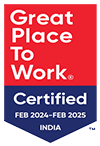
In present times, the world is continuously moving forward to using the latest technologies, so has automation improved its ways to make our work easier. The word automation was coined in the 1950s, very few people really understood what it meant but now this term has become the talk of the town. Robotic Process Automation or RPA is an intelligent way of working on complicated tasks which can be categorized by the utilization of AI. RPA does not replace humans with actual robots, actually, these are softwares through which you can configure automation workflows and automate your complicated business operations.
Types of RPA tools
There are different types of tools RPA tools available in the market which are built as an extension of the previous generation of bots. The four types of robotic process automation tools are listed below –
- Before the RPA generation came into the picture, small enterprises were automating the simple processes with simple hacks. Neither were they scalable or reliable but they increased the productivity of humans.
- Afterward, the programmable solution bots came into place. These bots easily interacted with other systems.
- Then the self- learning tools came into existence. These tools saw the humans in action, understood the process and then took over the platform to perform those same actions.
- Finally, cognitive or intelligent automation bots augment self-learning bots with advanced functionalities to handle unstructured information and make decisions based on complex, unstructured input.
How to get started with RPA?
You need to follow the below steps –
- Gain extensive knowledge about the history behind RPA and explore more about Traditional Automation.
- Learn about RPA and its various applications.
- Choose the process that you wish to automate, and retrospect about the process dependencies. But ensure that your business doesn’t suffer loss while you are busy automating the task.
- Gain extensive hands-on experience in RPA Tools, such as UiPath, Blue Prism, and Automation Anywhere.
How to choose the best RPA tools?
Choosing RPA tools is one of the complicated tasks after knowing the types of tools available in the market. In fact, a question may come on to your mind on how to choose the tool? You have to consider some parameters while selecting the tools.
Technology
Many organizations perform their day to day tasks outside the local desktop using virtual machines. The RPA tool you are choosing must be platform independent and should support all types of applications.
Scalability
You should also figure out how quickly and easily the RPA tool can respond to business requirements, changes, exceptions or increasing operations.
Security
Security is one of the important parameters to be considered while selecting RPA tools. Although these tools are a piece of software, in which you need to measure the implementation of security controls.
Total Cost of Ownership
In this, the initial setup cost of the RPA system, ongoing vendor license fees, and maintenance cost are included. You should consider all types of costs when you wish to select an RPA tool for your job to be done.
Ease of Use & Control
Ensure that RPA tool that you are choosing must be user-friendly as it is important in terms of efficiency and employee satisfaction. The solutions which are easy to use require less training and have better ease of control.
Instant Deployment
Verify RPA tool should be able to interact with applications using the screens, validation, and business rules as they are presented via a virtual desktop, not the original ones.
Well, these are the few parameters that you have to consider while selecting the RPA tool.
What to know about deploying RPA solutions?
All RPA tools are quite different from one another so don’t think all RPA tools are the same. These are the important criteria that you should take into consideration while deploying RPA solutions –
Consistency
One of the key benefits RPA offers is bringing the rate of processing errors down significantly, if not eliminating them in specific workflows altogether. RPA tools need to be reliable and must perform as expected to ensure accuracy. Monitoring abilities allow IT teams to keep a watchful eye over RPA activity to continue performance levels.
Scalability
Applying RPA solutions to a solitary process is a decent way to get familiarized with this technology and create a viable use case to show to key stakeholders. RPA tools work best when extended to cover abundant time-consuming tasks. RPA tools must be able to scale up at huge quantities to tackle more demanding work over time.
Promptness
Only the best RPA solutions will allow for fast, easy customization to create new bots intended for specific front- and back-office tasks. IT teams need to be able to rapidly and simply design RPA bots that address the most critical pain points when they appear.



